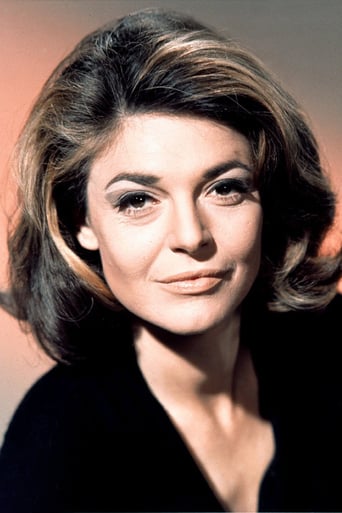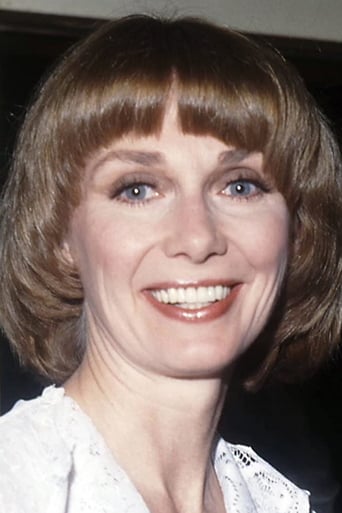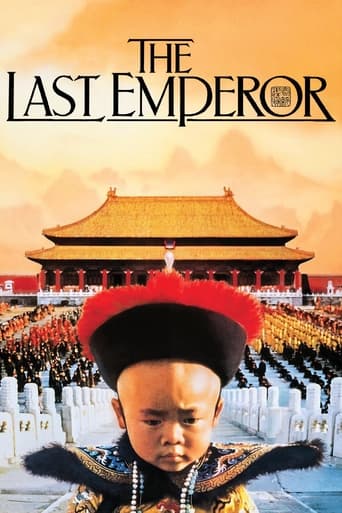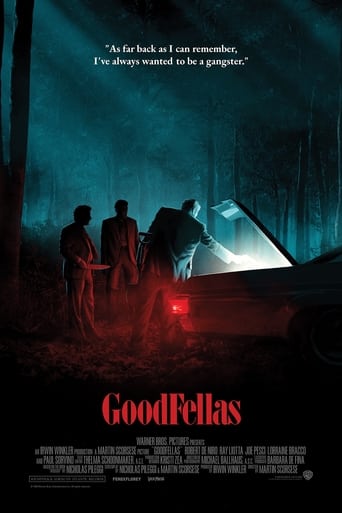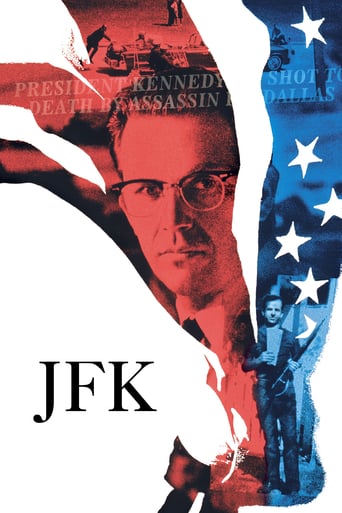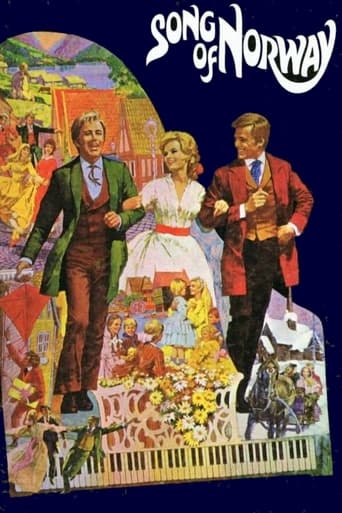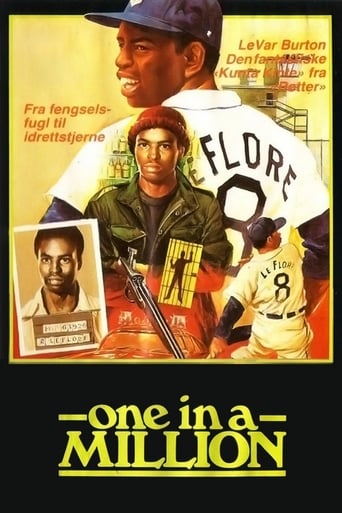The Miracle Worker (1962)
The true story of the frightening, lonely world of silence and darkness of 7-year-old Helen Keller who, since infancy, has never seen the sky, heard her mother's voice or expressed her innermost feelings. Then Annie Sullivan, a 20-year-old teacher from Boston, arrives. Having just recently regained her own sight, the no-nonsense Annie reaches out to Helen through the power of touch, the only tool they have in common, and leads her bold pupil on a miraculous journey from fear and isolation to happiness and light.
Watch Trailer
Cast


Similar titles
Reviews
Just what I expected
From my favorite movies..
The film's masterful storytelling did its job. The message was clear. No need to overdo.
The thing I enjoyed most about the film is the fact that it doesn't shy away from being a super-sized-cliche;
You've no doubt heard of Helen Keller. The deaf, mute, blind girl who overcame her impairments to achieve greatness. What you might not know about is her childhood struggle. Arthur Penn's adaptation of William Gibson's play tells that story. Patty Duke plays the socially isolated girl put under the tutelage of Anne Sullivan (Anne Bancroft). The breakfast scene is truly the movie's high point, showing how difficult the process was for both of them. Believe me, both Bancroft and Duke deserved their Oscars for the roles. Penn continued his directorial career with "Bonnie and Clyde", "Alice's Restaurant" and "Little Big Man".Back in the '90s I saw a production of "The Miracle Worker" in a local theater. Obviously seeing it as a stage production is more intense, since you feel as if you're there with them, but the movie is still a masterpiece. I hope that there's one day a movie about Helen Keller's adult life, showing how she fought for social justice (among other things, she helped found the ACLU, and she came out against Woodrow Wilson's invasion of Russia).After Patty Duke died last year, I was reading an article about her and it showed a photo of her meeting Helen Keller around the time that the movie got released. I wonder what it was like for Keller to learn that there was a movie made about her childhood, since she obviously couldn't watch or hear the movie.
A moving story, covering the childhood years of blind-deaf Helen Keller and how her tutor Annie Sullivan helped her.Does require a fair bit of perseverance, however. The first half is quite painful to watch, as Keller does random, almost malicious things, without any sign that her behaviour will change. This also involves a few "fight" scenes between her and Sullivan, scenes that seem to go on far too long and are far too frequent.Add in an incredibly irritating, overacted performance by Victor Jory as the stupid-yet-very opinionated father - his idea of acting seems to be shouting very loudly, all the time - and the movie is set to be a massive test of patience.Gets better, however, and the ending is quite emotional.
Many of the previous comments and reviews of "The Miracle Worker" have detailed the amazing story of Helen Keller (1890-1968)----a child born with normal vision and hearing who became blind and deaf at nineteen months of age due to a tragic illness. Annie Sullivan rescued this remarkable child from a life of virtual isolation. As a result, Helen became an honor graduate of Radcliffe College (1904), a world famous author-lecturer and a greatly admired inspirational role model for the disabled.This story is best known to us through the play and film---both starring Anne Bancroft as Annie and Patty Duke as Helen.The play won the Tony Award for the best play of the year in the 1959-1960 season (running for 719 performances), and Bancroft received the best actress Tony Award for her leading role. The play garnered two other Tony Awards-----including best director for Arthur Penn.The film was similarly honored with Oscars to Bancroft (best actress) and Duke (best supporting actress) for 1962. They reprised their earlier stage roles. It also received Oscar nominations for Penn (best director) and William Gibson (best adapted screenplay).But lest we forget----the very first presentation of the Helen Keller story in a visual medium came on Feb. 7, 1957. It was the 19th episode during the first season of Playhouse 90----one of the greatest gems of the Golden Age of Television. This is where the Gibson-Penn collaboration first began. It had a different cast then---Teresa Wright played Annie and Patty McCormack was Helen. McCormack was then 11 years of age when she played the considerably younger real Helen, whereas Duke was almost 13 when she first appeared in the play. The Playhouse 90 version was introduced by Mickey Rooney, who pointed out that this was an original story by Gibson that had never been seen before. Wright received an Emmy Award best actress nomination but lost out to Polly Bergen in the Playhouse 90 broadcast of "The Helen Morgan Story." I recently had the good fortune to be in New York City and visited the remarkable Paley Center for Media on West 52nd Street---one of the city's truly outstanding destinations. Among its many archival treasures is the Playhouse 90 "The Miracle Worker." I saw it again for the first time in over 50 years, and would like to offer a few comments about it.In my opinion, Wright's portrayal of Annie surpassed Bancroft's. Wright projected an impressive young woman who also had warmth and humor. She made Annie a believable person with real strengths and weaknesses. Bancroft's performance always seemed structured, edgy and essentially an actor's creation rather than a stab at reality---without Wright's humanity and empathy. I wonder whether Wright was ever offered the opportunity to reprise her role in the play when it was cast. McCormack presented a Helen that occasionally exhibited a mischievous streak in addition to frustration and anger. I don't recall that aspect as clearly in Duke's performance. Also, McCormack was somewhat closer in age to the real Helen when the events of the depicted story actually occurred. Both gave us stunning performances for child actors.The week following Playhouse 90's "The Miracle Worker," Mickey Rooney starred in its production of Rod Serling's "The Comedian." It won the Emmy Award for 1957's Best Single Program of the Year. "The Miracle Worker" had not even been nominated for this award. Today, nobody remembers "The Comedian." But most everyone knows and admires "The Miracle Worker" in all its versions.When you have the opportunity, check out the Playhouse 90 broadcast at the Paley Center for Media. You will find it to be an experience that is well worth your time. It will provide you with interesting and compelling performances of Annie and Helen that differ in many ways from those most of us are familiar with from the much better known play and film.
Any movie that's fresh, advanced, forward-looking, in impression or technique, usually pushes further than almost all other mainstream movies sharing the same era or genre, which is to say: too far for some tastes. The innocuousness of most of our movies is received with such stock expectations that when an American movie goes outside that box to pull a real reaction out of us, it tends to pull that same reaction out of the trends in mainstream movies as well. So, as Arthur Penn's work would build open famously shortly hereafter, The Miracle Worker is a film that rages where most biopics tread softly. The showpiece is a one-room, nine-minute battle of wear and tear, as the teacher forces table manners on her untamed ward. It's a shatter-and-batter melee bursting at the seams, played out with thoroughgoing diligence.Likewise remarkable is Penn's sense of familial histrionics on a postwar Southern estate. Despite its complicated genesis through a range of mediums including real life, the story of Helen Keller in film form, an understandably intimidating notion, nevertheless outclasses many true stories and stage adaptations in the domain of visual technique. Penn creates clever, lasting flourishes of cinematic storytelling and atmosphere-sculpting. The calculated, leisurely dissolves, focal changes, filtering and use of light augment the well-known story in depth.There are occasions when two actresses are so in step with each other, they seem like they're but one character and one performance. Such is the situation with The Miracle Worker starring Anne Bancroft as Annie Sullivan a weak-sighted teacher struggling to reach blind and deaf Helen Keller played by the gifted young Patty Duke. They collaborate like few performers can, drawing us into their challenged rapport and keeping us stuck to their triumphs and catastrophes. While Duke's hardly been a solid presence in film or TV over the past thirty years, there was little misgiving of her flair and skill. Bancroft, though, sustained an outstanding career for several decades, and her performance in The Miracle Worker is astonishing for its precise vividness and emotional reverberation. Neither role lacked hefty challenges and both actresses surrendered exceptional career-making and ultimately Oscar-winning performances.Penn was a sharp leader of actors, but his work was always powerfully dynamic and state-of-the-art because of his exemplary equilibrium of attention to visual motifs and filling the atmosphere of a movie with an emotional grab of the our collars. The Miracle Worker was made in 1962, and maybe it's not the byzantine audiovisual takeover of The Manchurian Candidate, but Penn does nevertheless employ some camera, cutting and focal techniques, resulting in the story being told through the truly agitated emotional situation of Annie Sullivan. Her coarse, translucent flashbacks bring us first-hand into Sullivan's visually-impaired world. And I'll never forget those various cross-dissolves panning around and around on a loop. Or how characters will sit in silhouette in their respective moments of doubt and vulnerability.








